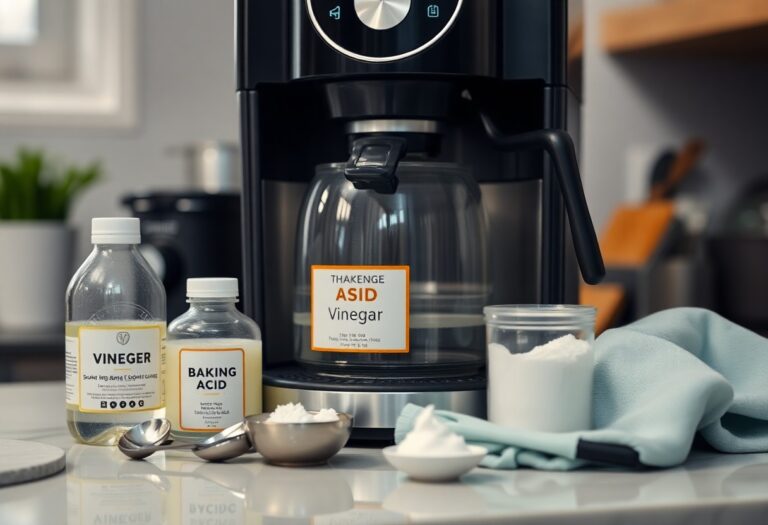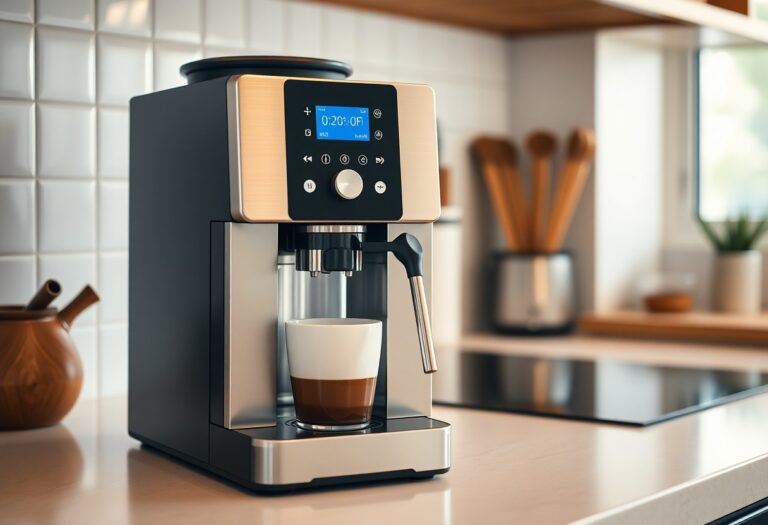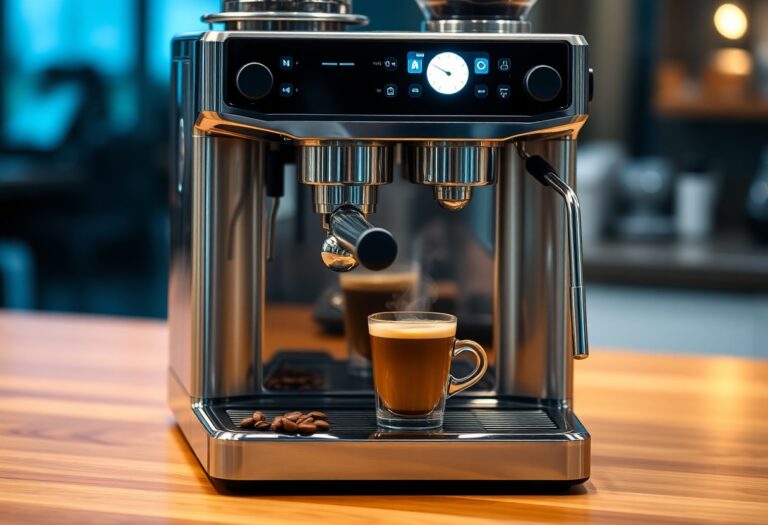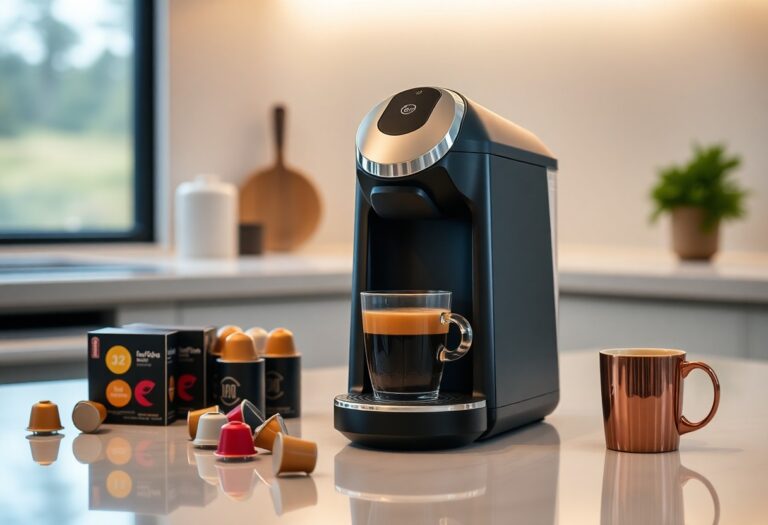What Grind for a Coffee Machine – Grinding Specifications
Many coffee enthusiasts often overlook the significance of grind size when it comes to brewing the perfect cup. Understanding the right grind for your coffee machine can greatly influence the taste and aroma of your brew. Whether you favor a coarse grind for a French press or a fine grind for espresso, the grind size affects extraction and ultimately your coffee’s quality. Knowing these grinding specifications ensures you maximize the flavors of your beans, creating delightful coffee experiences every time you brew.

Key Takeaways:
- Grinding size impacts the extraction process; coarser grinds are suited for methods like French press, while finer grinds are ideal for espresso.
- Consistency in grind size is important for achieving uniform flavor, as variations can lead to over-extraction or under-extraction.
- The type of coffee beans used can influence the optimal grind specifications; lighter roasts may require different settings compared to darker roasts.
- Freshly ground coffee enhances flavor; consider investing in a burr grinder for better consistency over blade grinders.
- Experimenting with grind sizes and brewing times can help in finding the perfect balance tailored to individual taste preferences.
The Importance of Grind Size in Brewing
Grind size significantly influences the quality of your coffee, as it directly affects the extraction process. Finer grinds increase the surface area of coffee exposed to water, allowing for quicker extraction and often resulting in a more robust flavor. Conversely, coarser grinds slow down extraction, which leads to a milder brew. Finding the right grind size ensures that you achieve the ideal balance between strength and flavor, ultimately elevating your coffee experience.
How Grind Size Affects Extraction
Extraction is largely dependent on the grind size of your coffee beans. A finer grind exposes more surface area to water, leading to a faster extraction that can enhance flavors but may also introduce unwanted bitterness if over-extracted. In contrast, a coarser grind slows down the extraction, potentially resulting in underwhelming flavors if not steeped long enough. Balancing both ends ensures you achieve the best flavor profile.
Matching Grind Size to Brewing Method
Different brewing methods require specific grind sizes to optimize flavor extraction and enhance your coffee experience. For instance, espresso demands a fine grind for quick extraction under pressure, while French press benefits from a coarse grind for proper steeping. Drip coffee makers typically work best with a medium grind to achieve balanced extraction in the time allowed. Tailoring your grind size to the brewing method is the key to unlocking the full potential of your coffee.
To effectively match grind size to your chosen brewing method, consider the unique characteristics of each method. For example, if you’re brewing with a pour-over technique, a medium-fine grind will typically yield the most flavorful cup, as it allows for sufficient extraction without overwhelming bitterness. If you prefer cold brew, opt for a much coarser grind to prevent over-extraction during the prolonged steeping time. Familiarizing yourself with these relationships will lead to perfecting your coffee preparation skills.
The Science Behind Different Grind Types
Understanding the science behind grind types illuminates how each one interacts with your brewing method, impacting extraction time, flavor intensity, and overall coffee experience. Here’s a quick breakdown:
| Grind Type | Effect on Extraction |
|---|---|
| Coarse | Slow extraction, highlighting body and subtle flavors. |
| Medium | Balanced extraction, promotes a mix of flavors. |
| Fine | Fast extraction, focusing on acidity and intensity. |
| Extra Fine | Quickest extraction, best suited for espresso. |
| Uneven Grinds | Inconsistent flavor profile due to varied extraction rates. |
The How do you guys figure out the best grind size without … insight can help refine your understanding of grind specifications.
Coarse vs. Fine: The Grinding Spectrum
On the grinding spectrum, coarse grinds range from large granules to chunky textures, ideal for methods like French press or cold brew where a slower extraction process is needed. In contrast, fine grinds are characterized by their powdery texture, imperative for espresso and Aeropress. The thickness plays a pivotal role in flavor extraction, molding the coffee’s essence with every cup.
Understanding Particle Size Distribution
Particle size distribution significantly impacts coffee extraction and flavor development. The variance in size affects how water interacts with coffee, leading to diverse flavor profiles. A uniform grind enhances consistency, while a mix of sizes can lead to both over-extraction and under-extraction in a single brew, resulting in a muddied taste. Optimal extraction relies not only on the grind size but on achieving a consistent particle size distribution for an enjoyable coffee experience.
Specialty Grinds and Their Unique Characteristics
Specialty grinds cater to specific brewing methods, allowing you to extract the fullest flavor from your coffee beans. Each grind size enhances the unique characteristics of the coffee, whether you seek a rich espresso shot or a robust French press brew. Understanding these variations not only impacts the taste and aroma of your coffee but also the overall coffee experience you’ll enjoy with each cup.
Espresso Grind: Precision and Pressure
For espresso, a fine grind is imperative, creating a compact puck that withstands high pressure during extraction. Properly ground espresso grinds consist of granules similar to table salt, allowing for an optimal 25-30 seconds of brewing time. This precise level of grind translates directly to a rich, creamy shot with dense crema that accentuates the coffee’s nuanced flavors and aromas.
French Press Grind: Bold and Robust
The French press grind, characterized by coarser grains resembling breadcrumbs, allows for longer steep times without clogging the filter. This grind highlights the coffee’s natural oils and flavors, resulting in a full-bodied brew that many coffee lovers appreciate. Steeping for four minutes optimizes extraction, providing a bold taste that can be complemented with cream or enjoyed black.
This coarser grind is not just about size; it influences the extraction process significantly. As the coffee steeps, the larger particles ensure that the soluble compounds dissolve slowly, creating a bolder flavor profile. The result is a cup brimming with aromatic richness, allowing the unique characteristics of your chosen beans to shine through. Plus, the French press method embraces the natural oils, giving you a rewarding mouthfeel that finely ground methods often lose.
Practical Tips for Achieving the Perfect Grind
To achieve the perfect grind for your coffee, consider the following practical tips to enhance your brewing experience:
- Experiment with different grind sizes to see what suits your preferred method.
- Keep your grinder clean to prevent any taste contamination.
- Use fresh beans, as older beans can negatively affect your grind quality.
- Adjust your grind time based on the brew method for optimal extraction.
Knowing these tips can significantly elevate the flavor profile of your coffee.
Choosing the Right Grinder for Your Needs
Select a grinder that aligns with your brewing methods and preferences. If you frequently brew espresso, a high-quality burr grinder is important for precise size adjustments. For other methods like French press or drip coffee, a more versatile grinder will serve you well. Consideration of whether you prefer an electric or manual grinder also plays a role in your decision-making process. Your coffee experience relies heavily on this choice.
Maintenance and Calibration for Consistent Results
Regular maintenance of your grinder is key to achieving consistent results. This includes cleaning and recalibrating your grinder to ensure that the grinds produced remain uniform and flavorful. Oil and coffee residue can build up over time, affecting the grind size and ultimately the extraction process during brewing.
Calibration involves adjusting the settings on your grinder based on the type of coffee you’re using and your brewing method. As coffee beans age, they can lose moisture, which alters their density and causes changes in how they grind. Periodically checking and adjusting the grind settings ensures that your coffee maintains a consistent flavor profile. Use a scale to measure your coffee-to-water ratio, and record the grind settings that yield the best results to streamline your process in the future.

Common Misconceptions About Grinding Coffee
Many coffee enthusiasts fall for common fallacies regarding coffee grinding. One prevalent myth is that the grind size doesn’t significantly affect the flavor, but in reality, it plays a pivotal role in extraction. Improper grind size can lead to under-extraction or over-extraction, drastically altering the taste profile. To explore this further, check out How to find the right grind settings for your coffee machine and elevate your brewing experience.
Debunking the Myth of ‘One Size Fits All’
Every brewing method calls for a specific grind size, and suggesting that one grind fits all scenarios oversimplifies the complexities of coffee extraction. For instance, espresso requires a fine grind for optimal pressure and extraction time, while a French press thrives with a coarse grind to ensure balanced extraction without bitterness. Ignoring these differences can lead to disappointing brews.
The Role of Freshness in Grinding
Grinding coffee just before brewing makes a noticeable difference in taste. Once coffee beans are ground, they lose their freshness rapidly due to oxidation. This degradation begins immediately, impacting the aroma and flavor compounds that contribute to a high-quality cup of coffee. To preserve the vibrancy of your coffee, invest in a high-quality burr grinder and grind your beans right before you brew.
The freshness of your coffee beans is paramount in achieving the best flavor. After grinding, the surface area of the coffee increases, which exposes more of it to air and accelerates the oxidation process. Studies have shown that ground coffee begins to lose its flavor within just 15 minutes. Therefore, to fully enjoy the rich and nuanced flavors of your coffee, you should grind only what you need right before brewing. This practice will not only enhance your coffee’s aroma but also ensure that every cup is as delicious as possible.
Conclusion
Taking this into account, understanding the grinding specifications for your coffee machine is vital for achieving the perfect cup. You should consider the grind size, type of grinder, and consistency tailored to your brewing method. By selecting the appropriate grind, you enhance flavor extraction, ensuring an optimal coffee experience. With this knowledge, you can confidently experiment and refine your coffee-making skills for satisfying results every time.
FAQ
Q: What is the right grind size for espresso machines?
A: For espresso machines, a fine grind is recommended. The coffee particles should be similar to that of table salt to ensure proper extraction of flavors under the high pressure during brewing. This grind size allows for a rich crema and full-bodied taste, making it necessary for a quality espresso.
Q: How coarse should the grind be for a French press?
A: For a French press, a coarse grind is ideal. The coffee grounds should resemble breadcrumbs or sea salt to facilitate proper steeping. This grind size allows the water to extract flavors over a longer brewing time without leading to over-extraction and bitterness.
Q: What grind setting is best for drip coffee makers?
A: A medium grind is best for drip coffee makers. The coffee grounds should be similar to granulated sugar, allowing the water to flow through the coffee basket evenly. This medium grind ensures that flavors are extracted evenly within the standard brewing time of 4 to 6 minutes.
Q: Do different brewing methods affect grind size preferences?
A: Yes, different brewing methods require varying grind sizes. For instance, pour-over methods benefit from a medium-fine to medium grind, while cold brew requires a very coarse grind. Adapting the grind size to the specific brewing method enhances flavor extraction and overall coffee quality.
Q: Can I use pre-ground coffee in my coffee machine?
A: Yes, pre-ground coffee can be used in most coffee machines, but it may not yield the best flavor compared to freshly ground coffee. Grind size should match the brewing method you are using. It is advisable to check the packaging for grind specifications to ensure compatibility with your machine.







